Issue
What is the allocation of partnership liabilities and the tax implication of a foreclosure?
Related Tax Rule or Regulation
Internal Revenue Code Section 465
Internal Revenue Code Section 704
Internal Revenue Code Section 731
Internal Revenue Code Section 752
Internal Revenue Code Section 1001
Tax Regulation § 1.1001-2(c),
Case Study
An LLC is taxed as a partnership for federal tax purposes. The LLC has two members, A and B, who are both individuals. The LLC owns only one asset, which is a commercial building. The building was purchased for $1,000,000 several years ago, and now, because of depreciation, has a tax basis of $700,000. The building was partly purchased with a loan and has a mortgage secured by the property. The mortgage’s original balance was $900,000 but has been paid down to $800,000. The LLC’s agreement with the lender states that if the LLC defaults on the mortgage, the lender’s only recourse is to seize the building and sell it at auction. It cannot pursue the LLC for any remaining deficiency.
The building, because of a rapid decline in value since purchase, is now worth only $750,000. Both A and B personally guaranteed the mortgage in the circumstance the LLC fails to pay on the note. A and B are both insolvent, meaning the fair market value of each taxpayer’s assets are less than their liabilities. After the LLC pays down the mortgage to $800,000, it fails to make any additional payments. The lender seizes the property in foreclosure, and sells it for its fair market value of $750,000. Because both A and B are insolvent, the lender does not pursue either taxpayer for the remaining $50,000 ($800,000 – $750,000) deficiency.
For federal tax purposes, the disposition of a property pursuant to a formal foreclosure proceeding, even though involuntary, is a sale of the property. Because a foreclosure constitutes a sale, § 1001 dictates that gain or loss is computed on the difference between the “amount realized” and the taxpayer’s adjusted tax basis in the property. Therefore, what is the amount realized on a foreclosure? It depends on whether the mortgage secured by the property is recourse or nonrecourse.
On Schedule K-1 a taxpayer/partner is required to allocate the partnership’s liabilities among the partners, and is therefore required to distinguish between nonrecourse, recourse, and qualified nonrecourse debts since each type of liability is allocated differently.
Under § 704, a partner in a partnership may only utilize a loss allocated to that partner to the extent of the partner’s “basis” in the partnership interest. Conversely, § 752 also provides that any reduction in a partner’s share of the liabilities of the partnership is treated as a cash distribution to the partner. The event considered a distribution may create taxable gain to the partner under § 731 if it exceeds the partner’s outside basis in his interest.
Determining a partner’s allocable share of the liabilities of the partnership is often crucial to enable the partner to utilize a loss or take a tax-free distribution otherwise unavailable. The regulations divide partnership liabilities into three categories. The regulations under § 752 define a liability as recourse to the extent any partner bears the “risk of loss” for the liability. The partner would have to come out of pocket to pay off the creditor, with no right to reimbursement from the partnership or another party. The regulations define a nonrecourse liability as any liability for which none of the partners bears the economic risk of loss for the liability. “Qualified” nonrecourse debt is a specific designation given certain types of nonrecourse debt for purposes of the at-risk rules.
The first step in determining the tax consequences of a foreclosure are to identify whether the mortgage is nonrecourse or recourse. In the subject case study, the mortgage is recourse to both A and B under § 752.
Nonrecourse and recourse debt are relevant to § 752 and the allocation of partnership liabilities, but are also relevant in determining the amount realized on the sale of property in a foreclosure setting. Bottom line is that when determining the tax implications of a foreclosure to a partnership, it is not relevant how a liability is defined under§ 752, but rather, how a liability is defined under § 1001. § 752 is about the impact on the individual partners of the partnership’s inability to repay its debt. However, § 1001 is about the impact on the partnership of the partnership’s inability to repay its debt.
Under Regulation § 1.1001-2(c), a liability is recourse if the borrower is personally liability for the debt; and nonrecourse if the borrower is not personally liable for the debt and the creditor’s recourse is limited to the secured asset. A mortgage is nonrecourse if the lender’s sole option upon buyer’s default on the loan is to seize the property, sell it at an auction, and apply the proceeds to the debt. Conversely, if the mortgage is recourse, the lender can seize and sell the property, but then pursue the borrower for any deficiency remaining after foreclosure.
Once we have determined whether the mortgage is nonrecourse or recourse, we may determine the consequences as follows: If nonrecourse, the borrower is treated as if he or she sold the property for the entire balance of the nonrecourse mortgage. Thus, gain or loss is computed on the difference between the balance of the nonrecourse mortgage and the tax basis of the property. Upon the foreclosure of a property securing a recourse mortgage, the transaction must be bifurcated. In the first part of the transaction, the borrower is treated as if they sold the property for an amount equal to its fair market value. In the foreclosure setting, the fair market value is presumed to be the bid price. The amount realized is limited to the fair market value of the property because with a recourse mortgage, the lender can continue to pursue the remaining deficiency, i.e., the excess of the recourse debt over the fair market value of the property.
Thus, in the second part of the transaction, liability depends upon whether the deficiency is pursued and paid or forgiven. If the borrower pays the deficiency, no further gain or loss occurs. Alternatively, if the lender forgives the deficiency, the borrower recognizes cancellation of indebtedness (COD) income.
 If you are a member of a partnership and have questions related to the tax consequences of a foreclosure or any other tax inquiry, call THE TAX EXPERTS AT THE Thorgood Law Firm www.thorgoodlaw.com. For a FREE consultation call 212-490-0704.
If you are a member of a partnership and have questions related to the tax consequences of a foreclosure or any other tax inquiry, call THE TAX EXPERTS AT THE Thorgood Law Firm www.thorgoodlaw.com. For a FREE consultation call 212-490-0704.






